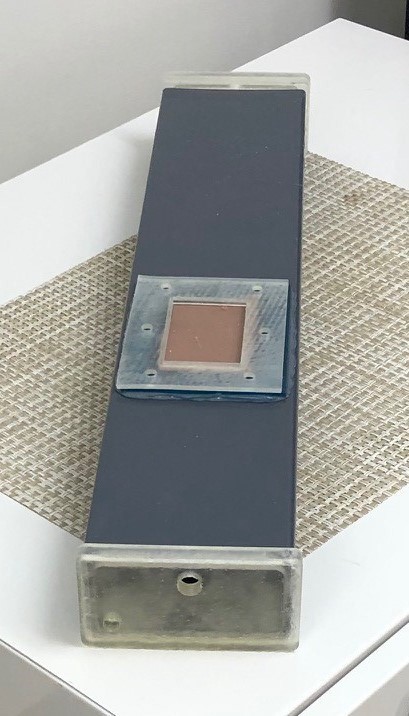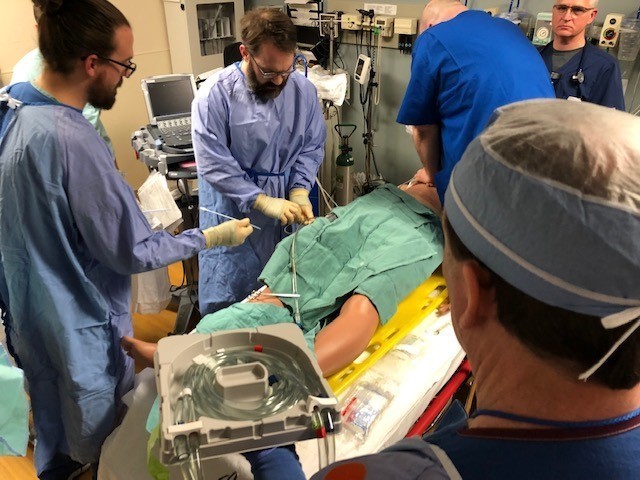Education & Training

ECMO Simulation Device for Hands-On Training and Improved Patient Outcomes
WARF: P190202US01
Inventors: Erick Przybylski, Mengizem Tizale, Joshua Hermsen
The Wisconsin Alumni Research Foundation (WARF) is seeking commercial partners interested in developing the first ECMO simulator that enables cross-functional team-based education throughout all steps from patient identification through cannulation and transport. In addition to training the ECMO setup and operation, the new simulator allows for identification of latent hazards within health care systems.
Overview
Extracorporeal membrane oxygenation (ECMO) is a technique for providing prolonged cardiac and respiratory support to persons whose heart and lungs are unable to provide an adequate amount of gas exchange or perfusion to sustain life. ECMO works by removing blood from the person's body and artificially removing the carbon dioxide and oxygenating red blood cells.
This intervention traditionally is used on children, but it is growing exponentially within the health care industry as a rescue therapy for adults including recommendations of use by NIH and the American Heart Association.
Existing ECMO training devices like the MSE ECMO Simulator or the EigenFlow devices train users to troubleshoot issues with the ECMO equipment using computer-simulated scenarios. However, these products do not provide the ability to teach hands-on cannulation and fluid flow together on a high fidelity patient mimicking simulator.
This intervention traditionally is used on children, but it is growing exponentially within the health care industry as a rescue therapy for adults including recommendations of use by NIH and the American Heart Association.
Existing ECMO training devices like the MSE ECMO Simulator or the EigenFlow devices train users to troubleshoot issues with the ECMO equipment using computer-simulated scenarios. However, these products do not provide the ability to teach hands-on cannulation and fluid flow together on a high fidelity patient mimicking simulator.
The Invention
UW–Madison and UW Hospital researchers and clinicians have developed a training device for ECMO procedures that would allow for both cannulation and pulsatile flow hands-on practice. This simulation device is a closed loop system with a large enough fluid capacity to operate actual ECMO systems. Using simulated skin and veins, the clinician can practice feeling for a pulse to locate a vein and then insert the ECMO cannula. The expended simulated tissue and veins are discarded and replaced with new disposable parts. The device can be placed on an actor or integrated into a mannequin to simulate scenarios in the field, hospital or in transit (e.g., ambulance, helicopter).
Applications
- Overall, this device produces more holistic training that allows healthcare organizations to reduce inefficiencies and improve patient outcomes.
Key Benefits
- Can be secured to any model of high-technology simulator or even a standardized patient (actor)
- Can be used independently as a task trainer for procedural competency
- Skin and vessels are ultrasound compatible allowing for accurate vessel identification and cannulation.
- Modifications can be made to allow for pulsatile flow of fluid to show cardiac function.
- Disposable skin pads can easily be changed between learners.
- Multiple ports for easy fluid fill and emptying
- Rigid tank allows for the simulator to be placed on functioning ECMO circuit/pump with realistic flow.
Stage of Development
The inventors designed and built a working simulator that they utilized in an unannounced simulated training scenario at the UW Health Berbee-Walsh Emergency Department. In the course of this training session, the clinicians triaged an incoming “patient," initiated the ECMO protocols and successfully used the simulator device to cannulate and achieve flow on the real ECMO device. During transport of the “patient” to the ICU, latent hazards were identified with the route and adjustments were made to the ECMO protocols to address those logistical issues.
Within 72 hours of this training session, UW Hospital had a real patient in cardiac arrest in route to the Emergency Department resulting in the ECMO protocols being activated. This patient was successfully resuscitated and eventually discharged with no neurological deficits due the efficient use of ECMO aided by the training provided using this simulation device. The patient has shared his story in a UW Health news release.
The development of this technology was supported by WARF Accelerator. WARF Accelerator selects WARF's most commercially promising technologies and provides expert assistance and funding to enable achievement of commercially significant milestones. WARF believes that these technologies are especially attractive opportunities for licensing.
Within 72 hours of this training session, UW Hospital had a real patient in cardiac arrest in route to the Emergency Department resulting in the ECMO protocols being activated. This patient was successfully resuscitated and eventually discharged with no neurological deficits due the efficient use of ECMO aided by the training provided using this simulation device. The patient has shared his story in a UW Health news release.
The development of this technology was supported by WARF Accelerator. WARF Accelerator selects WARF's most commercially promising technologies and provides expert assistance and funding to enable achievement of commercially significant milestones. WARF believes that these technologies are especially attractive opportunities for licensing.
Additional Information
For More Information About the Inventors
Tech Fields
For current licensing status, please contact Michael Carey at [javascript protected email address] or 608-960-9867
Figures

